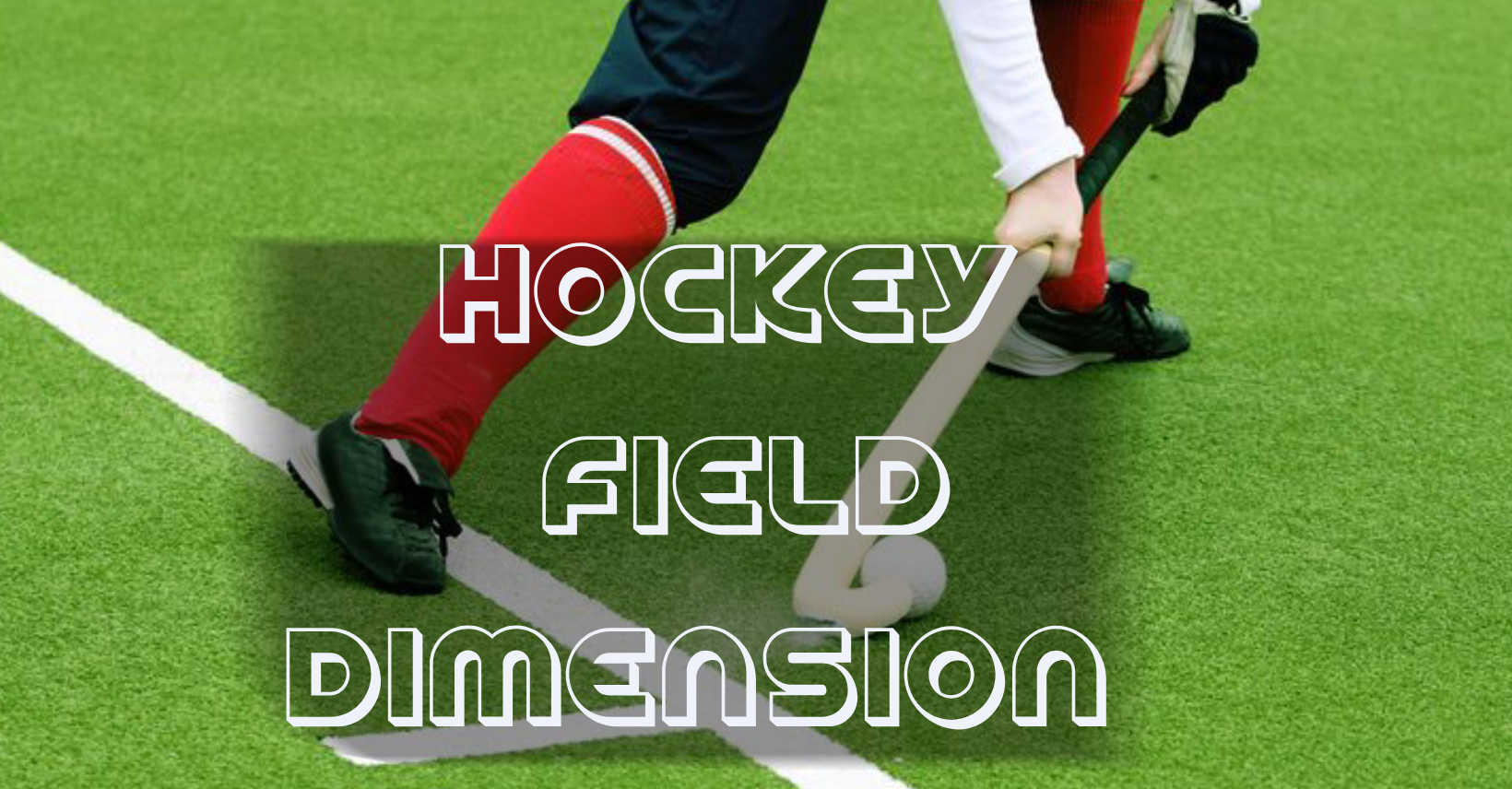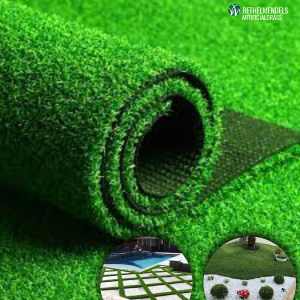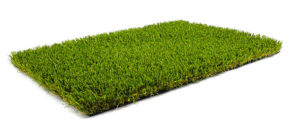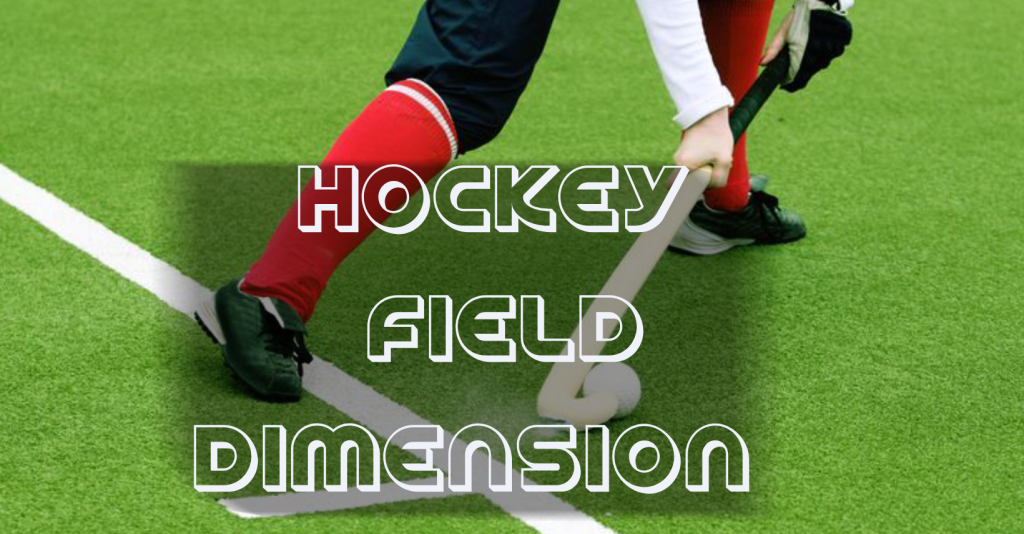
- Goal Post Measurement
- Field Dimensions
- Pitch Lines
- Hockey Fields Are Wet Why?
- Reason Why Hockey Field Are Blue?
Goal Post Measurement (Hockey Field and Line Dimensions)
The crossbar of a field hockey goal must be 7ft (2.14 m) above the ground, measured from the base of the crossbar. The inside edges of the upright goalposts must be 12ft apart, giving a total gate entrance area of 7.83sqm. Hockey Field and Line Dimensions, goal must also be at least 1.2 m deep at ground level and at least 0.9 m deep at the height of the crossbar.
Hockey goals consist of two upright posts connected at the top by a horizontal crossbar, with a net to catch balls that pass through the goalposts. The goalposts and crossbar must be white, rectangular, 50mm wide and 75mm deep.
Professional hockey goals also include side and back boards that are 18 inches (46 cm) above the ground. The backboard spans the entire width of the goal, 3.66m, and the sideboards are 1.2m deep.
Hockey Net Dimensions
Hockey nets can have a variety of dimensions depending on the height of the goal from the ground and the height of the crossbar. Typical dimensions of a standard field hockey net are approximately 3.7m (width) x 2.1m (height) x 1.2m (depth).
How Wide Is A Hockey Goal?
The International Hockey Federation requires that field hockey goals be 3.66m (12 feet) wide, with the goal posts themselves no wider than 50mm (2 inches).
The dimensions of a field hockey goal in feet are:
- Goalposts Width: 12ft
- Floor to bottom of crossbar: 7ft
- Depth above ground: 4ft
- Depth above crossbar height: 3ft
Field Dimensions
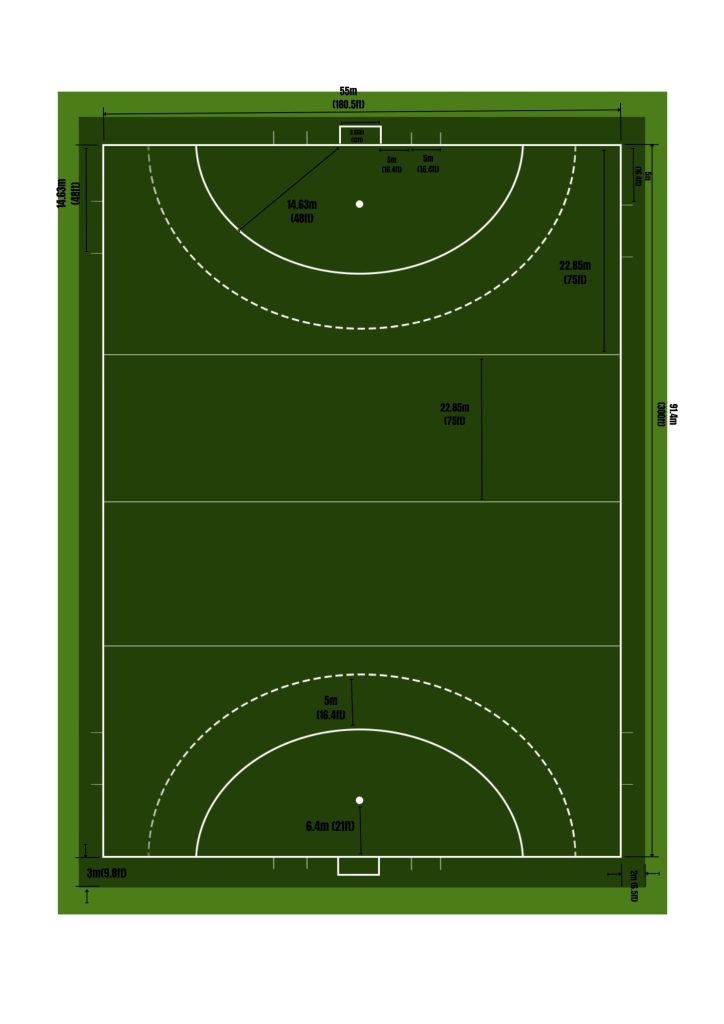
A hockey field is rectangular, with the long sides (sidelines) measuring 91.4 m (100 yards) long and the short side (backline) measuring 55 m (60 yards) wide. A standard Hockey Field and Line Dimensions has a total area of 5,027 square metres, or 1.24 acres.
There must be at least 2 m runouts on each side of the field and at least 3 m runouts on the backline. The International Hockey Federation states that when played on artificial turf, the last metre of the runoff behind the backline may be a different colour from the rest of the field.
How Wide Is Your Pitch Hockey Circle?
The striking circle, or penalty circle, in field hockey has a radius of 15m (16yd) and is actually a straight line with two quadrant arcs drawn at either side, to form a ‘D’ shape against the backline.
A straight line measuring 3.66m (4yd) – the same width as the goalposts – is positioned parallel to the goal, 14.63m (16yd) into the pitch. Two arcs, each with a radius of 14.63m, connect the ends of this line to the backline of the hockey field.
Feet Dimensions Hockey Field:
- Sideline length: 300ft
- Backline width: 180.5ft
- Sideline runout: at least 6.5ft
- Backline runout: at least 9.8ft
Pitch Line For Hockey Field And Line Dimensions
On a Hockey Field and Line Dimensions, three main lines are drawn 22.85 m (25 yards) apart along the 91.4 m (100 yd) sidelines. The line in the middle of the field is called the centre line, and the two on either side are called the 25-yard or 23-metre lines.
In addition to these three lines and the lines that form the two batting circles, there are many other markings on the field. There are markers 5 metres and 10 metres in both directions from the centre of the baseline. These are the marks for the defenders and attackers at penalty corners. The 10 meter mark is where the attacking team can take a penalty, and the 5 meter mark is the closest mark a defender is allowed to stand.
There is also a mark on each sideline, 5 meters from the baseline, which is the far corner attacker’s mark.
Dotted Lines In Hockey Field and Line Dimensions
The dotted line in field hockey is 5 meters outside the strike circle, and if the ball passes the dotted line during a penalty corner, that penalty corner ends. On pitches without dotted lines, the penalty corner is completed even if the ball goes more than 5 meters outside the strike circle.
The dotted line is used to determine the point where a free shot must be taken in case of a foul inside the “D”. This rule was abolished in 2015 and is no longer an international rule, so many playing fields no longer have dotted lines.
16yds Hit In Field Hockey
In field hockey, a 16-yard strike is a free hit for the defensive team if an opposing player commits a foul inside the shooting circle or hits the ball beyond the baseline. The shot is taken 16 yards (14.63 m) from the baseline.
Reason Why Hockey Fields Are Wet
Hockey fields are wet because water reduces friction on the field surface, allowing the hockey ball to fly more smoothly, prevents the ball from bouncing off the field, which is dangerous to hockey players, and reduces friction burns caused by the artificial turf when a player falls.
Reason Why Hockey Field Are Blue?
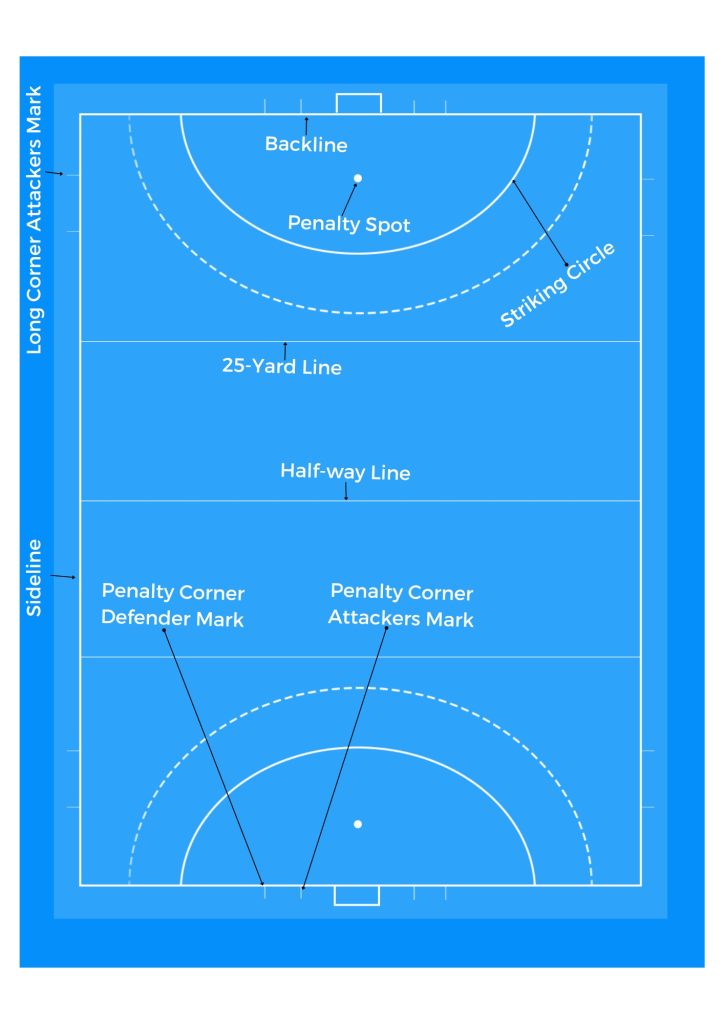
The 2012 London Olympics sparked a new trend of blue hockey rinks, as the blue grass allows the ball and marks on the hockey rink to be clearly visible to television viewers during games. While not all hockey fields are required to be blue, a yellow ball on blue grass has become the standard for professional field hockey tournaments.

